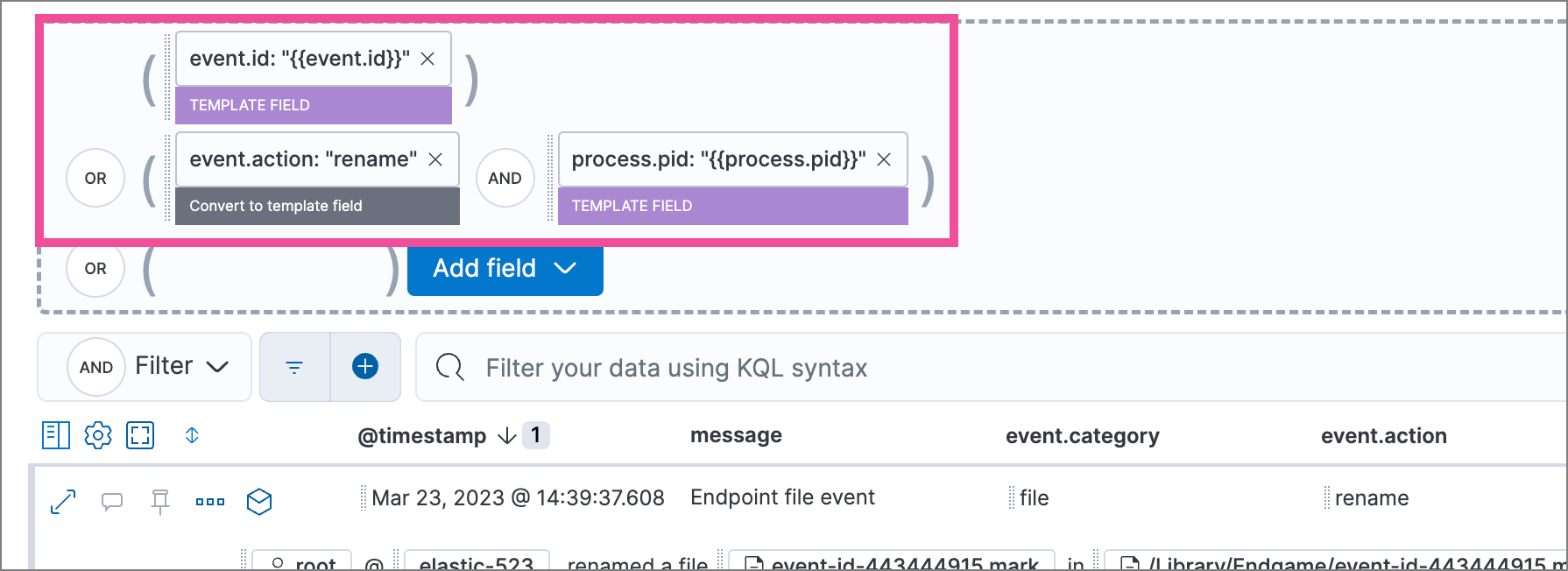Launch Timeline from investigation guides
editLaunch Timeline from investigation guides
editDetection rule investigation guides suggest steps for triaging, analyzing, and responding to potential security issues. For custom rules, you can create an interactive investigation guide that includes buttons for launching runtime queries in Timeline, using alert data and hard-coded literal values. This allows you to start detailed Timeline investigations directly from an alert using relevant data.
Interactive investigation guides are compatible between Elastic Stack versions 8.7.0 and later. Query buttons created in 8.6.x use different syntax and won’t render correctly in later versions, and vice versa.
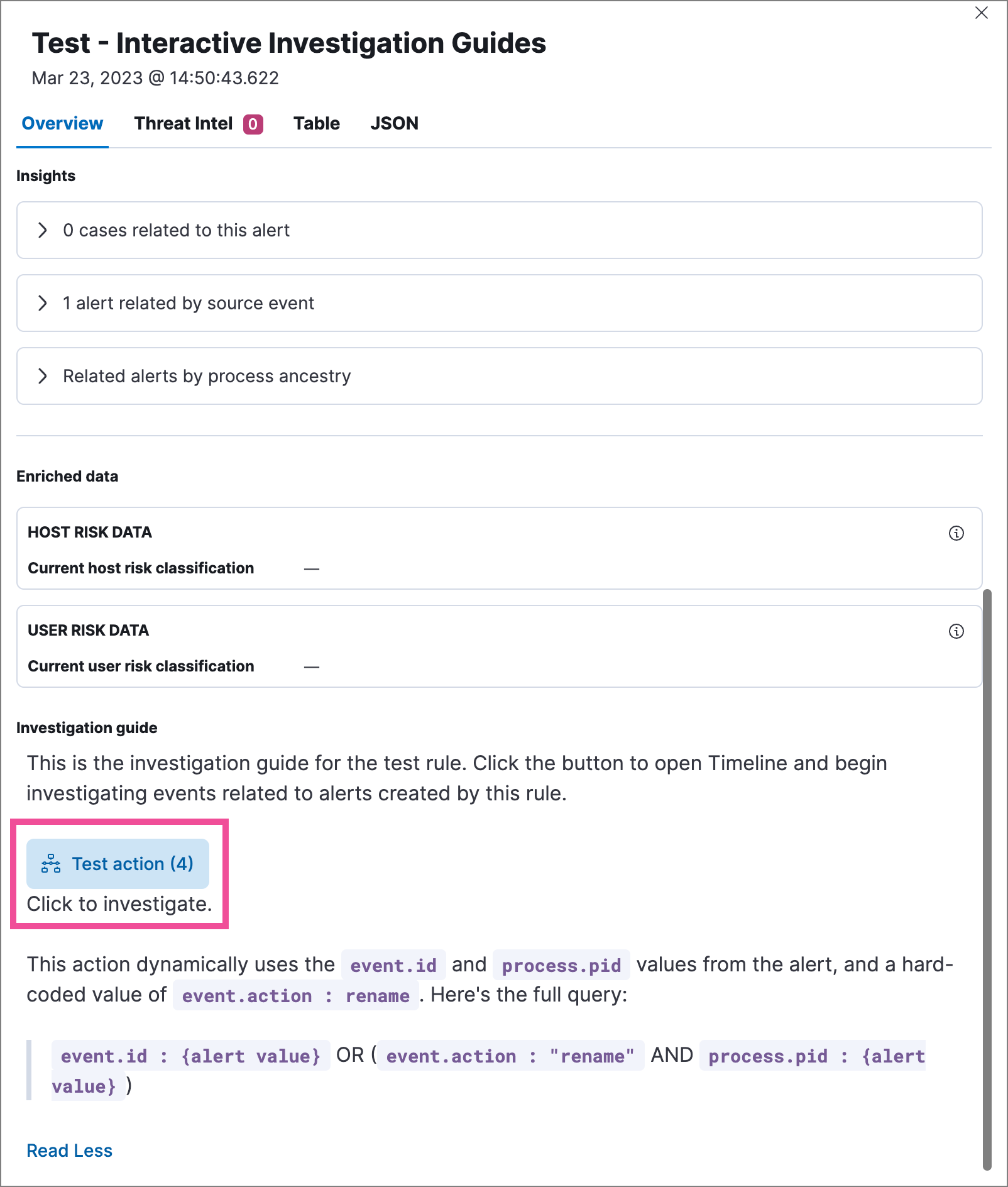
Each query button displays the number of event documents found. Click the button to automatically load the query in Timeline based on configuration settings in the investigation guide.
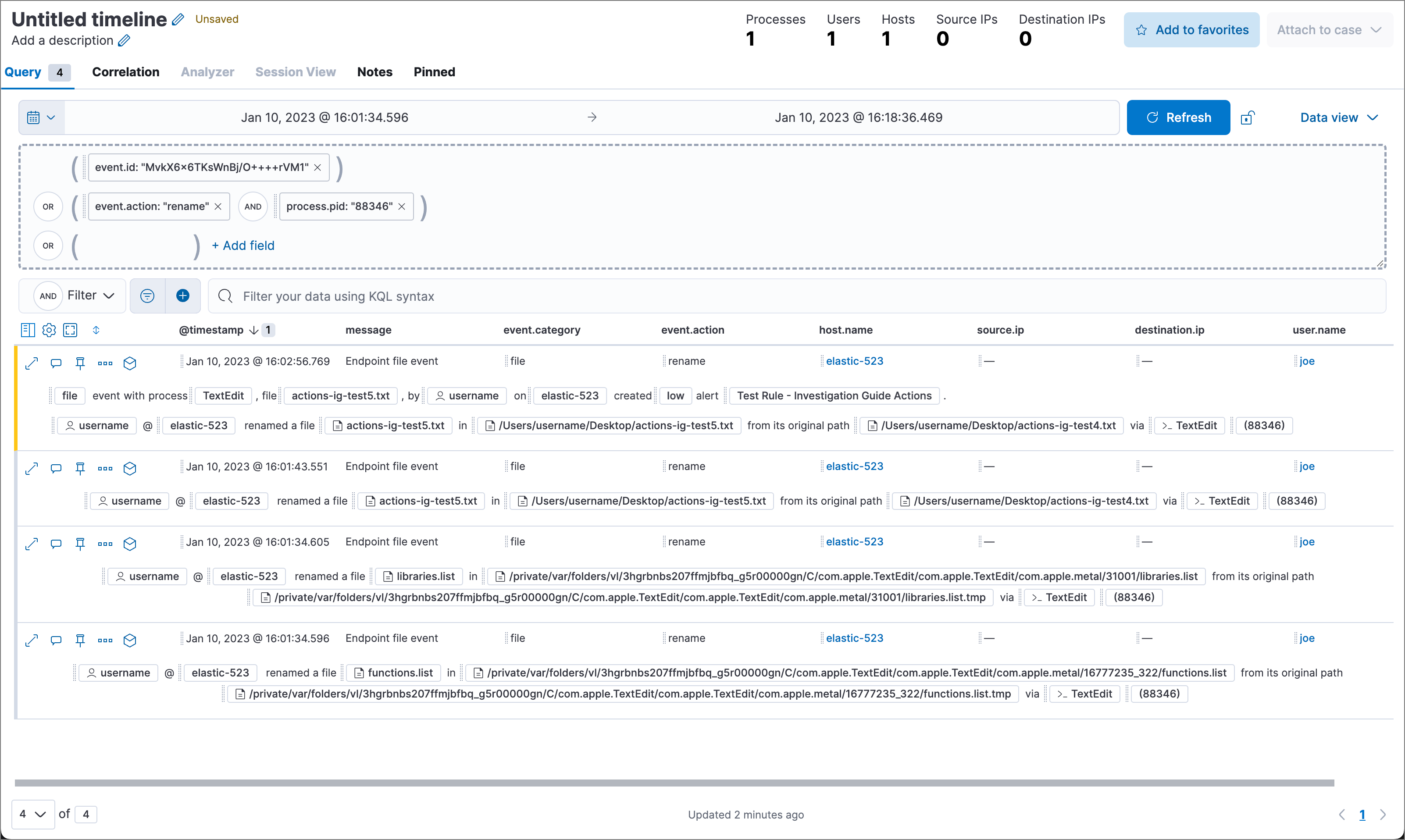
Add investigation guide actions to a rule
editYou can only create interactive investigation guides with custom rules because Elastic prebuilt rules can’t be edited. However, you can duplicate a prebuilt rule, then configure the investigation guide for the duplicated rule.
You can configure an interactive investigation guide when you create a new rule or edit an existing rule.
-
When configuring the rule’s settings (the About rule step for a new rule, or the About tab for an existing rule), expand the Advanced settings, then scroll down to the Investigation guide Markdown editor.
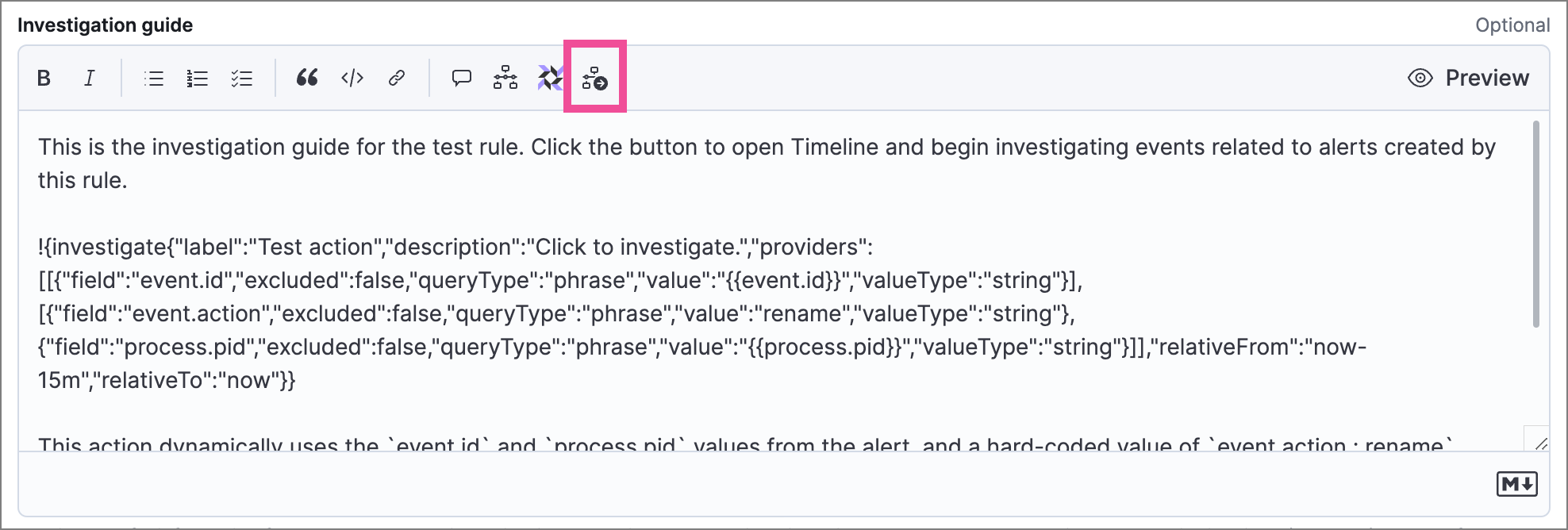
-
Place the editor cursor where you want to add the query button in the investigation guide, then select the Investigate icon (
 ) in the toolbar. The Add investigation query builder form appears.
) in the toolbar. The Add investigation query builder form appears.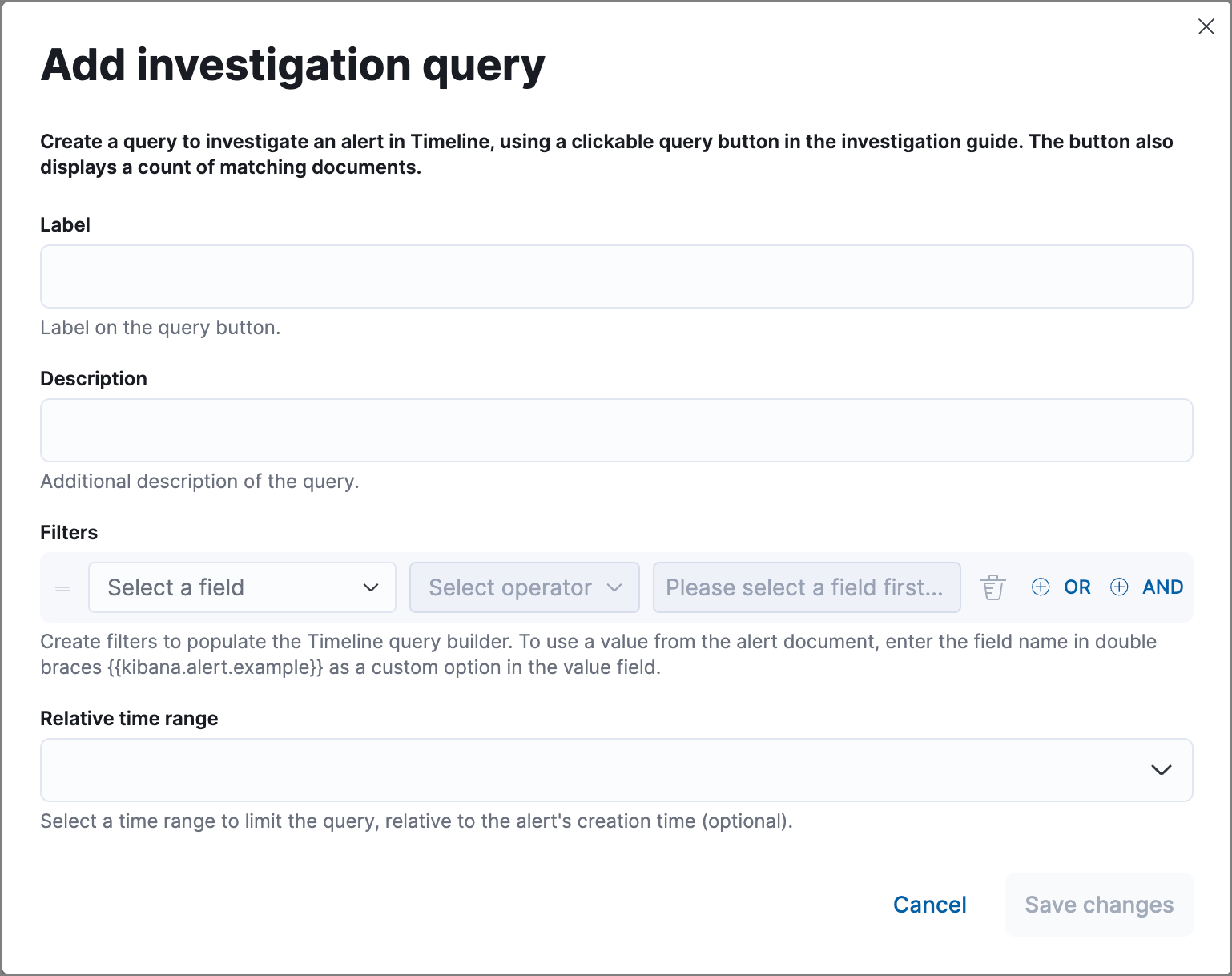
-
Complete the query builder form to create an investigation query:
- Label: Enter the text to appear on the query button.
- Description: (Optional) Enter additional text to include with the button.
-
Filters: Select fields, operators, and values to build the query. Click OR or AND to create multiple filters and define their relationships.
To use a field value from the alert as a query parameter, enter the field name surrounded by double curly brackets — such as
{{kibana.alert.example}}— as a custom option for the filter value.
- Relative time range: (Optional) Select a time range to limit the query, relative to the alert’s creation time.
-
Click Save changes. The syntax is added to the investigation guide editor.
If you need to change the query button’s configuration, you can either edit the syntax directly in the editor (refer to the syntax reference below), or delete the syntax and use the query builder form to recreate the query.
- Save and enable the rule.
Query button syntax
editThe following syntax defines a query button in an interactive investigation guide.
| Field | Description |
|---|---|
|
The container object holding all the query button’s configuration attributes. |
|
Identifying text on the button. |
|
Additional text included with the button. |
|
A two-level nested array that defines the query to run in Timeline. Similar to the structure of queries in Timeline, items in the outer level are joined by an Each item in
|
|
(Optional) The start and end, respectively, of the relative time range for the query. Times are relative to the alert’s creation time, represented as |
Some characters must be escaped with a backslash, such as \" for a quotation mark and \\ for a literal backslash. Divide Windows paths with double backslashes (for example, C:\\Windows\\explorer.exe), and paths that already include double backslashes might require four backslashes for each divider. A clickable error icon (![]() ) displays below the Markdown editor if there are any syntax errors.
) displays below the Markdown editor if there are any syntax errors.
Example syntax
edit!{investigate{
"label": "Test action",
"description": "Click to investigate.",
"providers": [
[
{"field": "event.id", "excluded": false, "queryType": "phrase", "value": "{{event.id}}", "valueType": "string"}
],
[
{"field": "event.action", "excluded": false, "queryType": "phrase", "value": "rename", "valueType": "string"},
{"field": "process.pid", "excluded": false, "queryType": "phrase", "value": "{{process.pid}}", "valueType": "string"}
]
],
"relativeFrom": "now-15m",
"relativeTo": "now"
}}
This example creates the following Timeline query, as illustrated below:
(event.id : <alert value>)
OR (event.action : "rename" AND process.pid : <alert value>)

Timeline template fields
editWhen viewing an interactive investigation guide in contexts unconnected to a specific alert (such a rule’s details page), queries open as Timeline templates, and parameter fields are treated as Timeline template fields.
